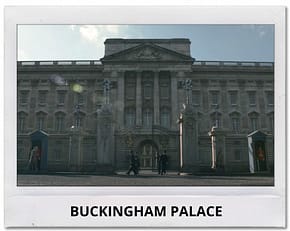As screenwriters, we often bang our heads against a brick wall: locations. The places where our story takes place whether it’s a tragic movie in a demonic castle, a comedy in an apartment or a miniseries in the world of chess, they’re all crucial for the overarching narrative of our story.
Can Locations become a Character?
Today we take the masterful season 4 of The Crown to explore how we make of the location a character with a unique purpose in the story.
The Crown follows the political rivalries and romance of Queen Elizabeth II’s reign and the events that shaped the second half of the twentieth century (IMDB).
Being a series that depicts a portrait of the British Royal Family, the locations in the show are castles and palaces, halls and great rooms, countries and cities where their story takes place. Furthermore, in Margaret Thatcher’ storyline we dive into the politics of that period going to Number 10 Downing Street and the Parliament.
These locations are essential to the series’ characters as they won’t be acting the same if they are in Buckingham Palace, the Audience Room, Thatcher’s Office and so forth: each space has a purpose for the characters, they reveal something about them.
Locations as Symbols

The most important place is Buckingham Palace which represents the Crown itself. Walled and wih high bars, symbolise the connection (and distance) between the Royal Family and the British people. Read how the Queen Elizabeth describes it herself:
Do you want out walls to be built even higher? Or the public to stand ten feet further back at engagements? […] Twenty-five years ago, we were given the advice to be more transparent. Accessible. To lower the drawbridge. It doesn’t feel right to be pulling it up again.
Queen Elizabeth, played by Olivia Colman. Season 4, Episode 5 “Fagan”

In Peter Morgan’s words, the series shows what’s behind those curtains: the characters’ worries, love affairs, daily life, etc.
The Locations in Diana’s Journey
While in previous seasons Buckingham has served as a way to show the relationship between the Royals and the staff, in season four Morgan takes it a step further with Princess Diana’s character.
Before her wedding with Prince Charles, Diana is still a young almost childish woman who will become the People’s Princess. The writer shows her immaturity by making her wander Buckingham Palace in roller skates while listening to music. Moreover, you just need to watch episode 3 ‘Fairytale’ to discover how Buckingham becomes a prison for Diana.

The Audience Room: Queen vs. Prime Minister
Alongside the halls and corridors of the palace, we find the Audience Room where Queen Elizabeth I meets her prime ministers, in this season the Iron Lady.

It turns out to be a perfect reflection of both characters’ relationship throughout the season:
- Thatcher being respectful to the Queen.
- The first cracks are shown. Class status and ideological differences
- She shows her ambition for power. Remember that line “I’d like to be very much tougher, but I can’t go fastest than the Parliament or the People will allow me.”
- They share moments about their families.
- The principal difference: The Commonwealth.
- The Queen stays and Thatcher resigns as First Minister. At the final moment, they’re not in the Audience Room as Margaret Thatcher no longer has a duty to the nation. Look at the final shoot of the two…

Royal Castles
In the ten episodes of the season, we go through all the distinctive castles of the Royals to contextualize each member of the family.

- The Balmoral Castle turns to be a test for every visitor, specially for Diana and the Prime Minister in episode 2 “The Balmoral Test”. And also to the Royal Family when they have to face the death of Lord Mountbatten.
- Highgrove, Charles and Diana’a residence, although it’s Charles love nest with Camila, becomes the personification of Charles’ soul. When he’s happy, it’s a place of joy, but the moment he becomes cruel with Diana this happens: his trees and beautiful garden turns sombre. We can see that metamorphosis in episode 9 “Avalanche” when Camila’s decoration, bed sheets and flowers changes to Diana’s. A powerful think to show the lies between the couple, don’t you think?

- Windsor Castle is a mirror to the family’s power and wealth.
- Clarence House is not only the princess Margaret’s palace, but where Diana cheats Charles in opposition to Charles’ Highgrove.
Locations in Thatcher’s Journey
Finally, in Thatcher’ storyline to keep her power we visit different locations.

- The exterior of Downing Street shows us Thatcher before the public, the cameras, her public self as the Iron Lady.
- The interior however shows her self as a mother and wife and her most vulnerable self.
- As in every political drama, the only place where she can be betrayed is at the Parliament as Julius Caesar in the Senate of Rome.
Finally, the series shows other countries like Australia, USA and countries of the Commonwealth. The purpose is to reflect that the characters’ actions have a reaction all over the world.


